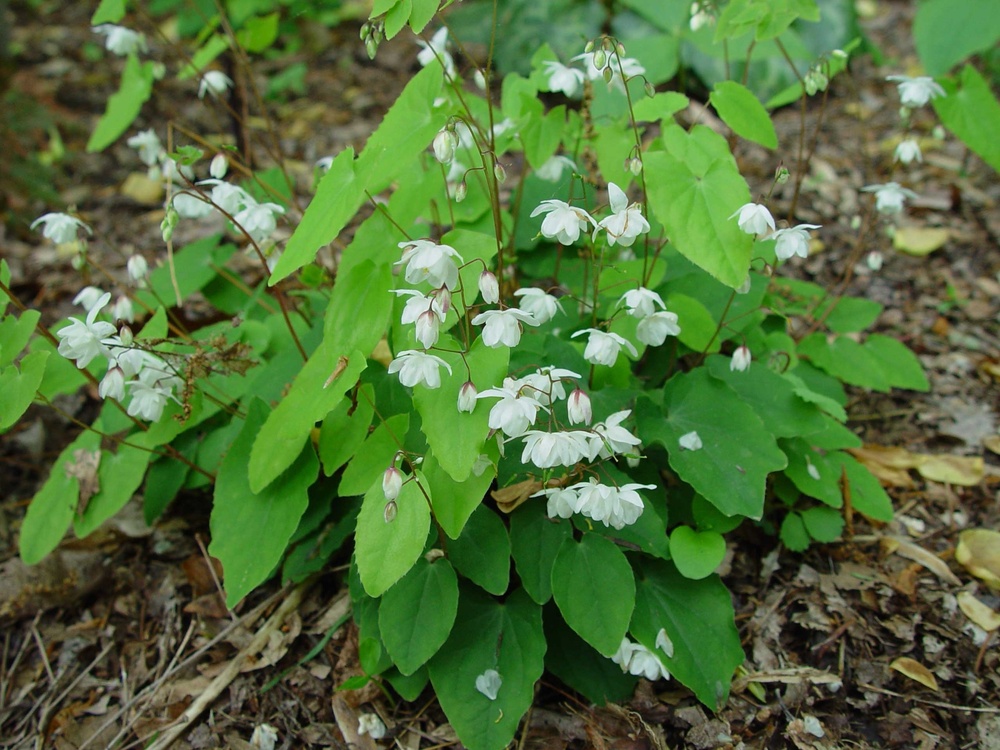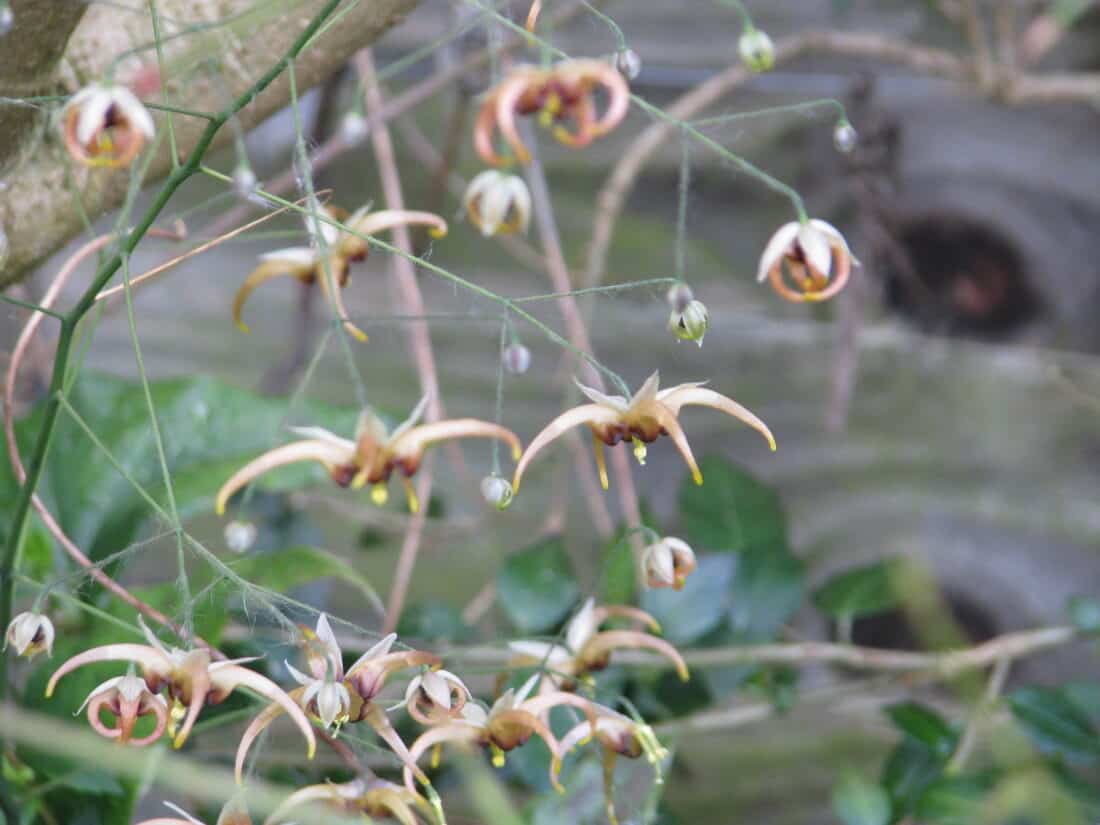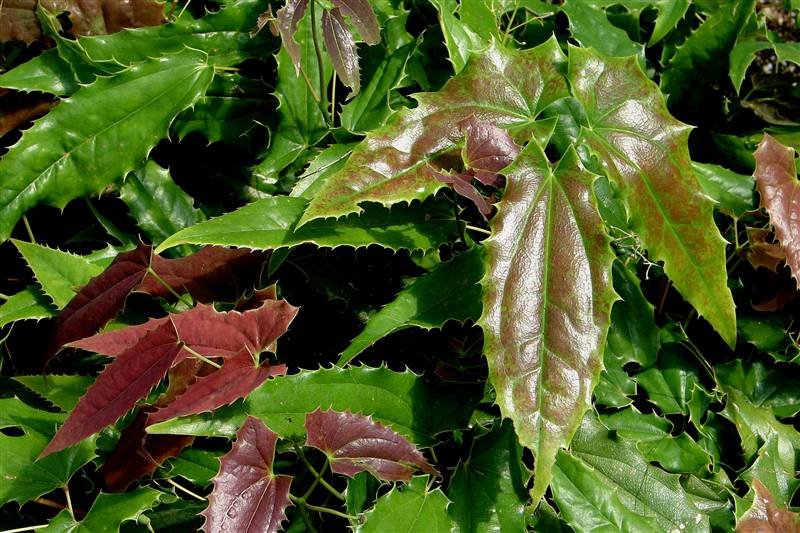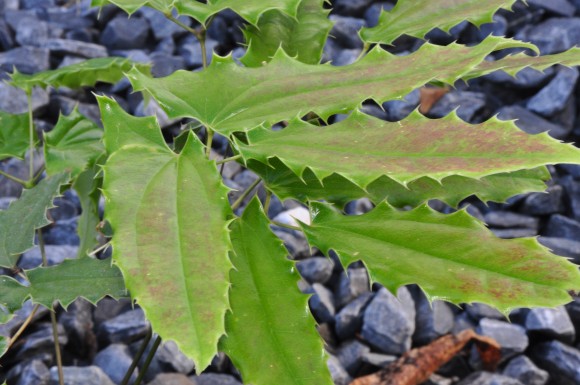It was around 15 years ago when I first heard about the genus Epimedium. This was while we lived in North Carolina and I worked at Plant Delights Nursery. Here was an evergreen groundcover that flowered, could grow in the shade, and was pretty tough. Since that time, whenever I hear anyone talk about Epimedium they usually refer to it as an underrated and underused perennial. Well, that has been 15 years so it is high time that more of us gardeners need to get on with it and plant more Epimedium.
And, I forgot to mention that deer do not like to eat them.

At Coastal Maine Botanical Gardens, we are working on developing a collection of Epimedium or “fairy wings” (as they are commonly called) in the gardens. Of all the plants in our collection, one that has really caught my attention is Epimedium wushanense.

A friend posted a picture of it on Facebook, and it reminded me to take a closer look at ours. Epimedium wushanense stands out by having spiny-looking leaves. The leaves are also much larger than most species, up to 10″ long, with irregular, red tints to the leaves as well.
All Epimedium have unique flowers and E. wushanense differs from other Epimedium by having smaller flowers with more on each spike.


Epimedium Wushanense – problem solver for dry shade.
Hardy to USDA zone 5 or 6 (it is so uncommon that we are not sure yet), Epimedium wushanense is one plant to add to that spot where you struggle to grow most everything else: shade, dry, with deer, etc.
It will prefer a slightly well-drained soil with adequate moisture until established. Once established, it will form a nice clump. It will lose its leaves during the winter in a colder climate but is beautiful when emerging in the spring.
Epimedium wushanense was introduced by the former owner of Garden Vision Nursery, Darrell Probst. This species comes from the Wushan Mountains of the Sichuan province of China.

Epimedium Wushanense in Summer
Epimedium wushanense, also known as Wushan barrenwort, is a flowering plant native to China. It is prized for its attractive heart-shaped leaves and delicate orchid-like flowers. This perennial herb is often used in traditional Chinese medicine for its purported aphrodisiac and medicinal properties.
A soft clump of epimedium in the garden will spread over time
The characteristic spiny leaves of Epimedium wushanense.

As you are plant shopping this spring, be sure to add an Epimedium or two or three to your garden. And if you come across E. wushanense, pick one up and give it a try. You are sure to impress your plant geek friends this summer!
–Rodney
Notes: Another popular variety of Epimedium wushanense is the newer introduction called Epimedium wushanense ‘Sandy claws’. Sandy Claws forms a larger plant, also with long, lance-shaped leaves and spiny margins. Also, the emerging foliage has a more dramatic maroon coloring that is hard to find in a shade garden. In the summer the foliage will mellow to green.
Very fascinating; I have an understory spot that has been difficult, this might be perfect. Thank you for the great tip.
Epimediums are lovely – nice flowers and pretty foliage. A good working plant. You might want to have at look at Cherry Tart. Darrell Probst recommended it to me as one of his favorites when I was at his nursery/sale a few years ago. It has very cheerful flowers, and standout foliage that has 3 seasons of interest.